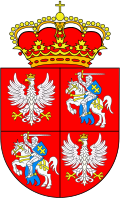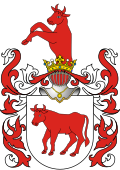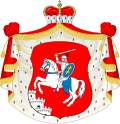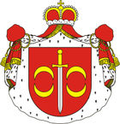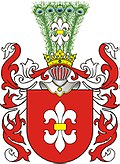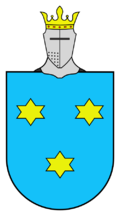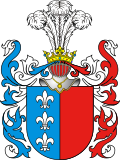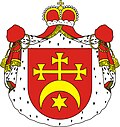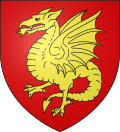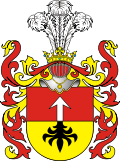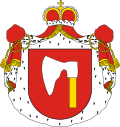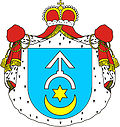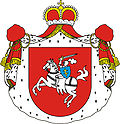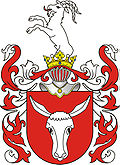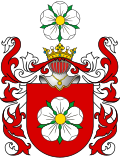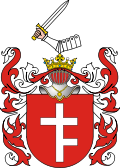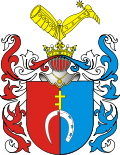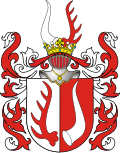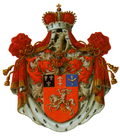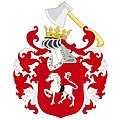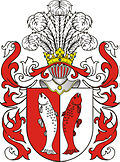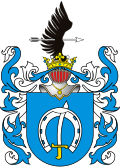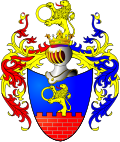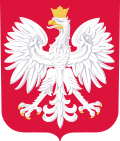Polish heraldry
Traditionally, Polish noble families/rody refer to people that share common roots or consanguinity; later, it also included further kinship. Some think the Polish clan does not mean consanguinity nor territoriality, as do the Scottish clan, but only membership in the same knight/warrior group (or a brotherhood of knights). For that reason, there are hundreds of different families in the same clan and all of them were/are entitled to use the same coat of arms. However, in regards to consanguinity, the matter is far from settled, and the question matters because of historiographical concern to discover the origins of the privileged status by membership in the knights' clan. In the year 1244, Bolesław, Duke of Masovia, identified members of the knights' clan as members of a genealogia:
"I received my good servitors [Raciborz and Albert] from the land of [Great] Poland, and from the clan [genealogia] called Jelito, with my well-disposed knowledge [i.e., consent and encouragement] and the cry [vocitatio], [that is], the godło, [by the name of] Nagody, and I established them in the said land of mine, Masovia, [on the military tenure described elsewhere in the charter]."
The documentation regarding Raciborz and Albert's tenure is the earliest surviving of the use of the clan name and cry defining the honorable status of Polish knights. The names of knightly genealogiae only came to be associated with heraldic devices later in the Middle Ages and in the early modern period. The Polish clan name and cry ritualized the ius militare, i.e., the power to command an army; and they had been used some time before 1244 to define knightly status. Nevertheless, in daily life, (from the 17th to the 20th century), the sense of belonging to a family predominated. This is indicated by the organization of most of Polish armorial, which are arranged by specific families and not by coat of arms.
It is known that a sense of belonging and attachment to the clan crest lineage existed in the old Polish consciousness and had survived from the Middle Ages, but it was probably more ceremonial and symbolic than "everyday".
Especially since there were fairly frequent instances, particularly among the poorer nobility in the 19th century, of accidentally (and sometimes deliberately) identifying themselves with various coat of arms to the heraldry offices of the partitioning countries. In this way, members of a single family sometimes formally became members of various coats of arms. [2] Also in those times, magnate families and some middle landowners families obtained titles (prince, count, baron) and their own coats of arms, (variations of their original herb), from the partitioning monarchies, the French empire, the pope and other kingdoms. [3]
Polish coat of arms have an own name, usually coming from its old war cry or the drawing.
This page is based on this
Wikipedia article Text is available under the
CC BY-SA 4.0 license; additional terms may apply.
Images, videos and audio are available under their respective licenses.
